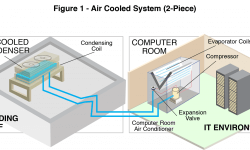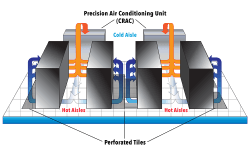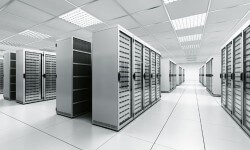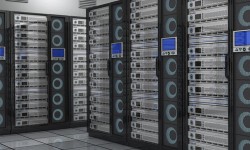Infrastructure is everywhere, and Data Centers are at the heart of housing computer systems and associated components such as telecommunications and storage systems. Understanding ASHRAE (American Society of Heating, Refrigerating, and Air-Conditioning Engineers) temperature and humidity guidelines for built environments is critical to the success of any data center. Read on to learn about ASHRAE temperature and humidity guidelines.
Read more →Anyone who owns a commercial building knows that ductwork is an integral part of the property’s operations. In order to operate at maximum efficiency, your HVAC ductwork needs to be designed, sized, and installed correctly. Proper duct size is all too often an overlooked feature of commercial HVAC systems. The role that duct sizing and material play in maintaining a safe, comfortable environment should not be underestimated. Having the right size and material for your ducts will maintain comfortable conditions, improve indoor air quality, minimize energy losses, and lower your heating and cooling bills, as well.
Read more →Data centers represent some of the largest individual electricity users globally, accounting for roughly 3% of all consumption. That number continues to grow year over year. As such, every data center has a responsibility to be as efficient as possible. Much of that efficiency is going to come down to effective data center HVAC design.
Read more →Data centers and IT rooms are becoming an integral part of businesses across the globe. And, as technology continues to change and evolve, computing equipment is being created in smaller sizes. However, the smaller size uses more electricity and can generate more heat, which creates a need for heat removal. So, it is essential that such spaces have precision cooling and heat rejection equipment in order for the equipment to stay at an even temperature and avoid overheating. There are several heat removal methods in which cooling equipment can be used to mediate the high heat generated by the computing equipment.
Read more →Looking for ways to keep your Data Center Server Room cool? Consider the hot aisle/cold aisle layout is a design for server racks. This configuration is beneficial as it will conserve energy and lower cooling costs by directly managing air flow.
Read more →How to Keep Your Server Room Cool With the advent of cloud computing and the advancement of technology, the number of servers and data protection has increased exponentially. These servers generate heat, which must be moved away from the electronics to keep them working at maximum efficiency.
Read more →Cooling for Computer Server Rooms HVAC your for server room isn’t just nice to have, it’s essential. If servers overheat and fail, it could cost you thousands of dollars in damage. Do you know the average temperature of your servers? Your server room? Generally, server rooms need
Read more →






